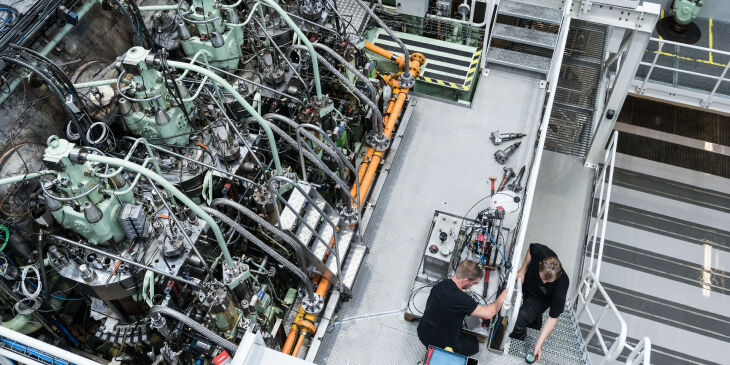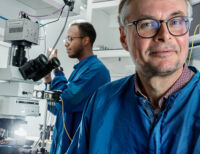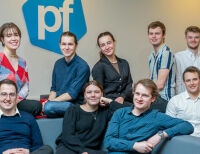Monday 10 Jan 22
New green fuels and a goal of increasing performance can make it attractive to 3D print parts of the large cargo ship engines.
The large marine engines of the world’s cargo ships are an important focus area in the maritime industry’s efforts to become more sustainable. This also applies to the individual parts of the engine, which must be continuously optimized in order to meet the future requirements of a lower and greener fuel consumption.
An essential component in this context is the injection nozzle, which injects fuel into the engine, where it is mixed with oxygen to ensure optimal combustion.
In a collaborative project between DTU and MAN Energy Solutions, a young researcher has conducted an extensive investigation into whether it could be advantageous to make a 3D-printed injection nozzle.
“At MAN Energy Solutions, we’ve long been aware that 3D-printed metal can provide us with some opportunities to design important parts of our ship engines that were not previously possible. This made a collaboration with DTU on exploring the potential an obvious choice,” says Peter Hagen, mechanical engineer at MAN Energy Solutions.
Broad analysis of 3D printing’s possibilities
Postdoc Thomas Dahmen from DTU Mechanical Engineering conducted the study, where he began by carrying out a Quality Deployment Function analysis for 3D printing. 3D-QFD is an analysis model used to provide an overview of the value 3D printing can add to a product as a whole.
“By applying the model and combining it with technical insight into both 3D printing methods and fuel injection, I have created a modular kit of how 3D-printed nozzles can be designed to increase engine performance and product lifetime,” says Thomas Dahmen.
The improvement of the injection nozzle was based on the fact that a better fuel flow could be achieved with a slightly different—and more curved—design. In this way, the new nozzle design contributes to improved engine combustion. Initial trials also suggest that the nozzle could potentially help reduce NOx emissions from the engine, but further studies will be required to demonstrate such an effect.
Comparing two different 3D printing techniques
The new 3D-printed injection nozzle showed such promising results in the DTU laboratory that it was subsequently tested on MAN Energy Solutions’ full-scale test engine at Research Centre Copenhagen.
“The test went well, and we look forward to doing a long-run test next,” says Peter Hagen and continues:
“Thomas’ thorough investigation has given us a fantastic basis for moving forward with 3D printing of metal components for marine engines. I’m quite sure we’ll see them in real engines soon.”
Peter Hagen stresses that the collaboration with DTU on continued optimization of marine engines will continue in the future.
In his comprehensive analysis, in addition to looking at the nozzle design, Thomas Dahmen also compared the pros and cons of two different 3D printing techniques—Laser Powder Bed Fusion and Binder Jetting— in combination with using different types of materials for the nozzles.
“This part of the analyses highlighted the suitability of Binder Jetting for intricate flow-related nozzle features and special high-temperature materials which would be impossible to realize with other manufacturing processes” says Thomas Dahmen.















